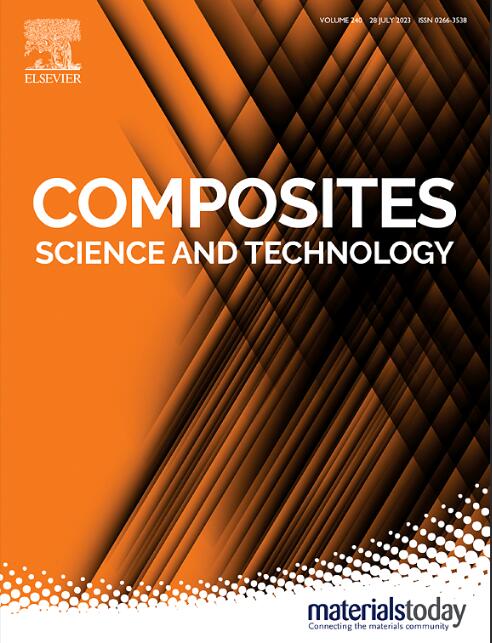Advanced Meta-Modeling framework combining Machine Learning and Model Order Reduction towards real-time virtual testing of woven composite laminates in nonlinear regime
IF 8.3
1区 材料科学
Q1 MATERIALS SCIENCE, COMPOSITES
引用次数: 0
Abstract
This paper presents an advanced meta-modeling framework that efficiently combines Machine Learning and Model Order Reduction (MOR) techniques for real-time virtual testing of woven composite materials. The framework is specifically designed to develop a multiparametric solution capable of accurately predicting the macroscopic nonlinear stress–strain curves of woven composite laminates submitted to loading–unloading paths. It takes into account five key microstructural parameters: yarn weft width, yarn warp width, yarn spacing, fabric thickness as well as the reinforcement orientation. The methodology employs the Proper Orthogonal Decomposition (POD) technique to decompose the stress–strain curves, extracting principal features that effectively characterize the overall composite’s response. Subsequently, a Random Forest machine learning model is applied to interpolate these features across the microstructural parameter space, allowing for rapid retrieval of corresponding features for any new laminate configuration in the nonlinear regime. A key advantages of this approach is its capacity to dynamically generate extensive virtual test databases, in real-time, across a wide range of composite laminate configurations. This capability provides a comprehensive and efficient tool for analyzing and optimizing composite performance while substantially reducing both experimental and computational costs. Furthermore, to enhance usability for engineers and researchers, this multiparametric solution has been integrated into a user-friendly Graphical User Interface (GUI) application. This GUI empowers users to easily explore various laminate configurations, visualize results, and conduct virtual testing, establishing the framework as a powerful tool for real-time virtual testing and in-depth analysis of microstructural effects on composite materials.

结合机器学习和模型降阶的复合材料编织层合板非线性实时虚拟测试的高级元建模框架
本文提出了一种先进的元建模框架,该框架有效地结合了机器学习和模型降阶(MOR)技术,用于编织复合材料的实时虚拟测试。该框架专门设计用于开发能够准确预测编织复合材料层合板在加载-卸载路径下宏观非线性应力-应变曲线的多参数解。它考虑了五个关键的微观结构参数:纱线纬宽、纱线经宽、纱线间距、织物厚度以及增强方向。该方法采用适当正交分解(POD)技术对应力-应变曲线进行分解,提取有效表征复合材料整体响应的主要特征。随后,应用随机森林机器学习模型在微观结构参数空间中插值这些特征,从而允许在非线性状态下快速检索任何新的层压配置的相应特征。这种方法的一个关键优点是它能够动态地生成广泛的虚拟测试数据库,实时地,在广泛的复合层压板配置。该功能为分析和优化复合材料性能提供了全面有效的工具,同时大大降低了实验和计算成本。此外,为了提高工程师和研究人员的可用性,该多参数解决方案已集成到用户友好的图形用户界面(GUI)应用程序中。该GUI使用户能够轻松探索各种层压板配置,可视化结果并进行虚拟测试,将框架建立为实时虚拟测试和深入分析复合材料微观结构效应的强大工具。
本文章由计算机程序翻译,如有差异,请以英文原文为准。
求助全文
约1分钟内获得全文
求助全文
来源期刊

Composites Science and Technology
工程技术-材料科学:复合
CiteScore
16.20
自引率
9.90%
发文量
611
审稿时长
33 days
期刊介绍:
Composites Science and Technology publishes refereed original articles on the fundamental and applied science of engineering composites. The focus of this journal is on polymeric matrix composites with reinforcements/fillers ranging from nano- to macro-scale. CSTE encourages manuscripts reporting unique, innovative contributions to the physics, chemistry, materials science and applied mechanics aspects of advanced composites.
Besides traditional fiber reinforced composites, novel composites with significant potential for engineering applications are encouraged.
 求助内容:
求助内容: 应助结果提醒方式:
应助结果提醒方式:


